Renderings have been revealed for a proposed mixed-use development at 210 N Aberdeen Street in West Loop. Consisting of an irregularly-shaped site, the property consists of an empty lot at the intersection of W Lake Street and N Aberdeen Street, the historic Arthur Harris Building along N Aberdeen Street located in the Fulton-Randolph Market Historic District, and a few one-story masonry buildings behind Arthur Harris fronting N May Street. LG Development Group is the developer behind the proposal.
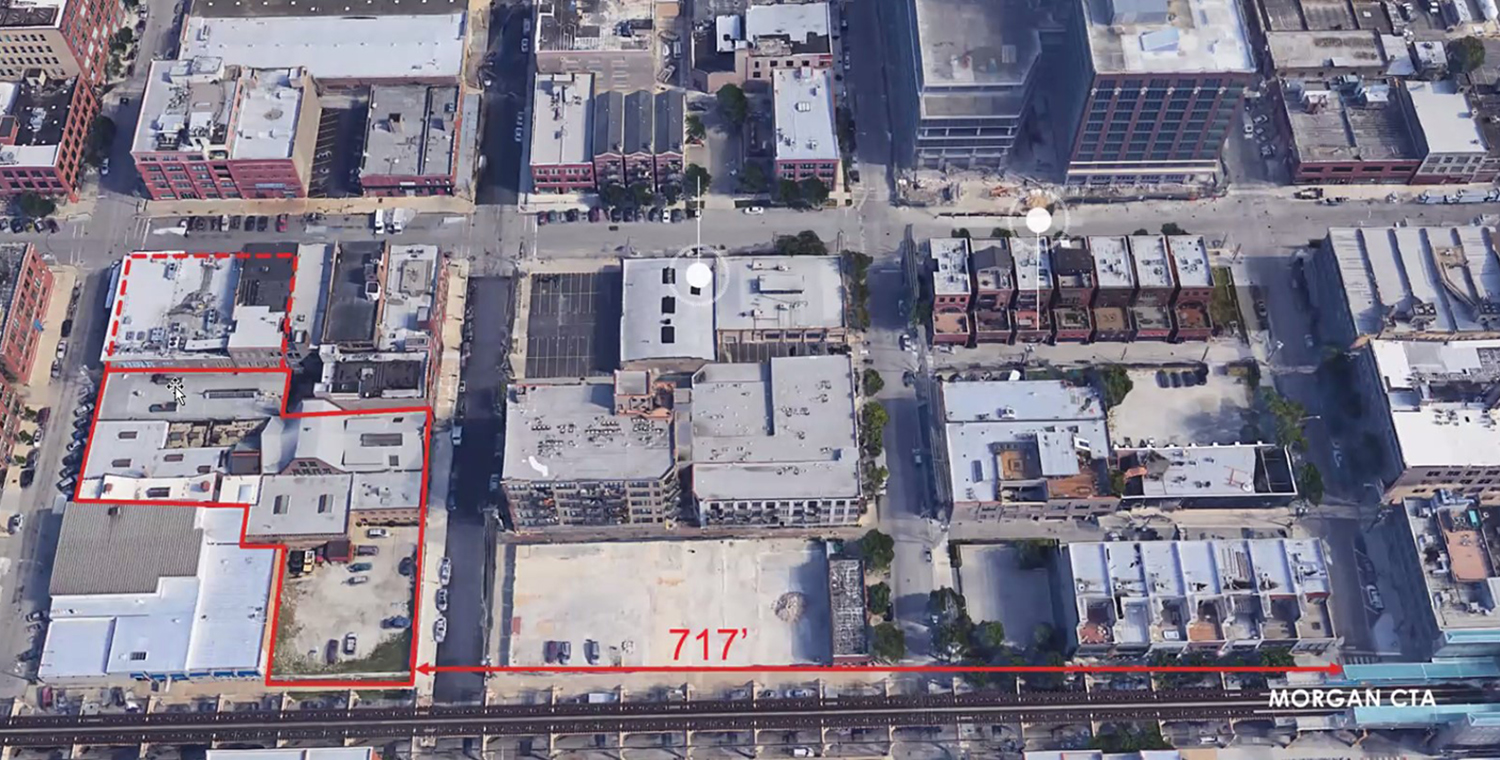
Aerial View of Existing Site at 210 N Aberdeen Street. Image by NORR
Now in its third iteration, the development is being designed by NORR. Initially proposed several years ago, the scope has changed from a two-tower hotel and office scheme to an all-office concept, and is now in its third iteration. Originally a 24-story tower rising 308 feet, the newly proposed mixed-use version will rise 19 floors, reaching 238 feet. The tower will hold retail space at the ground floor, with 414 residential units in the structure above. The unit mix will consist of approximately 50 percent one-bedrooms, 30 percent studios, and 20 percent two- and three-bedroom apartments. Approximately 20 percent of the residences will be designated as affordable as per the affordable housing requirements. Additionally, 102 parking spaces will be provided.
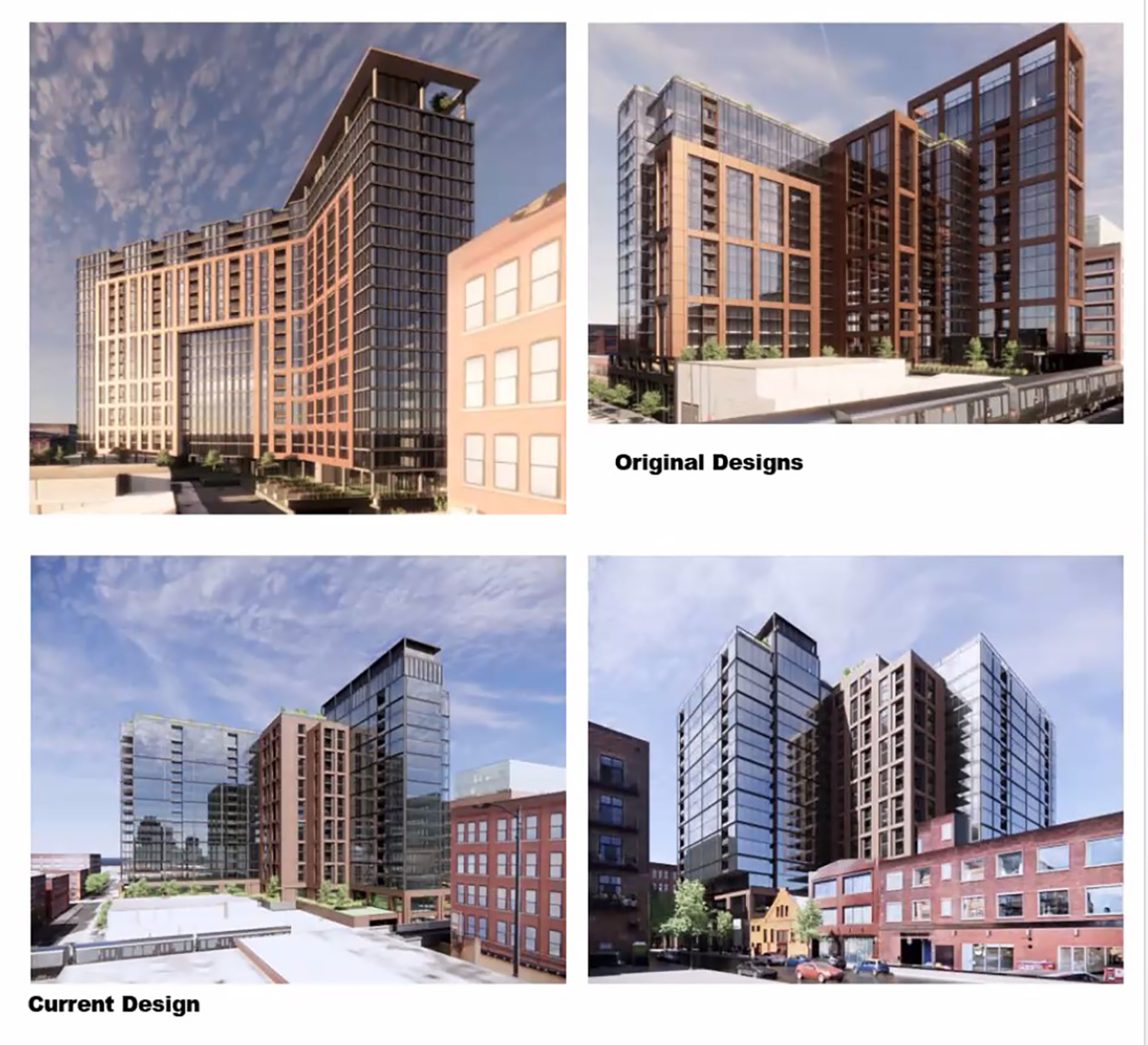
Previous Design Versions of 210 N Aberdeen Street. Renderings by NORR
The Arthur Harris Building, originally from 1904, will be renovated and retained, and be comprised entirely of retail space with frontage along N Aberdeen Street. Located in the Fulton-Randolph Market District, the contributing structure will undergo a renovation that includes masonry repairs, window replacement, and the insertion of a retail storefront at the center of the front facade. The original bowstring trusses will be restored.
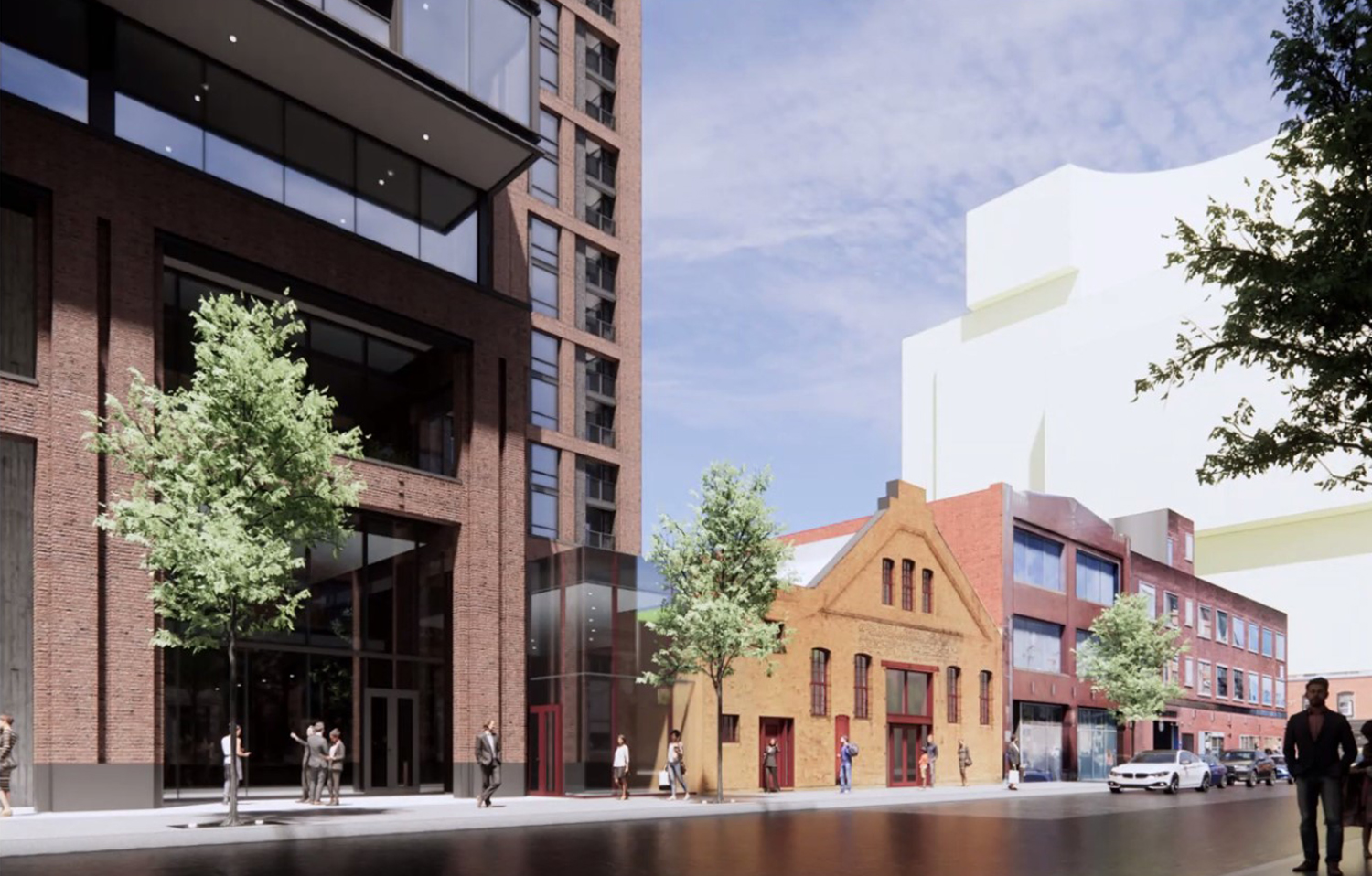
View of 210 N Aberdeen Street. Rendering by NORR
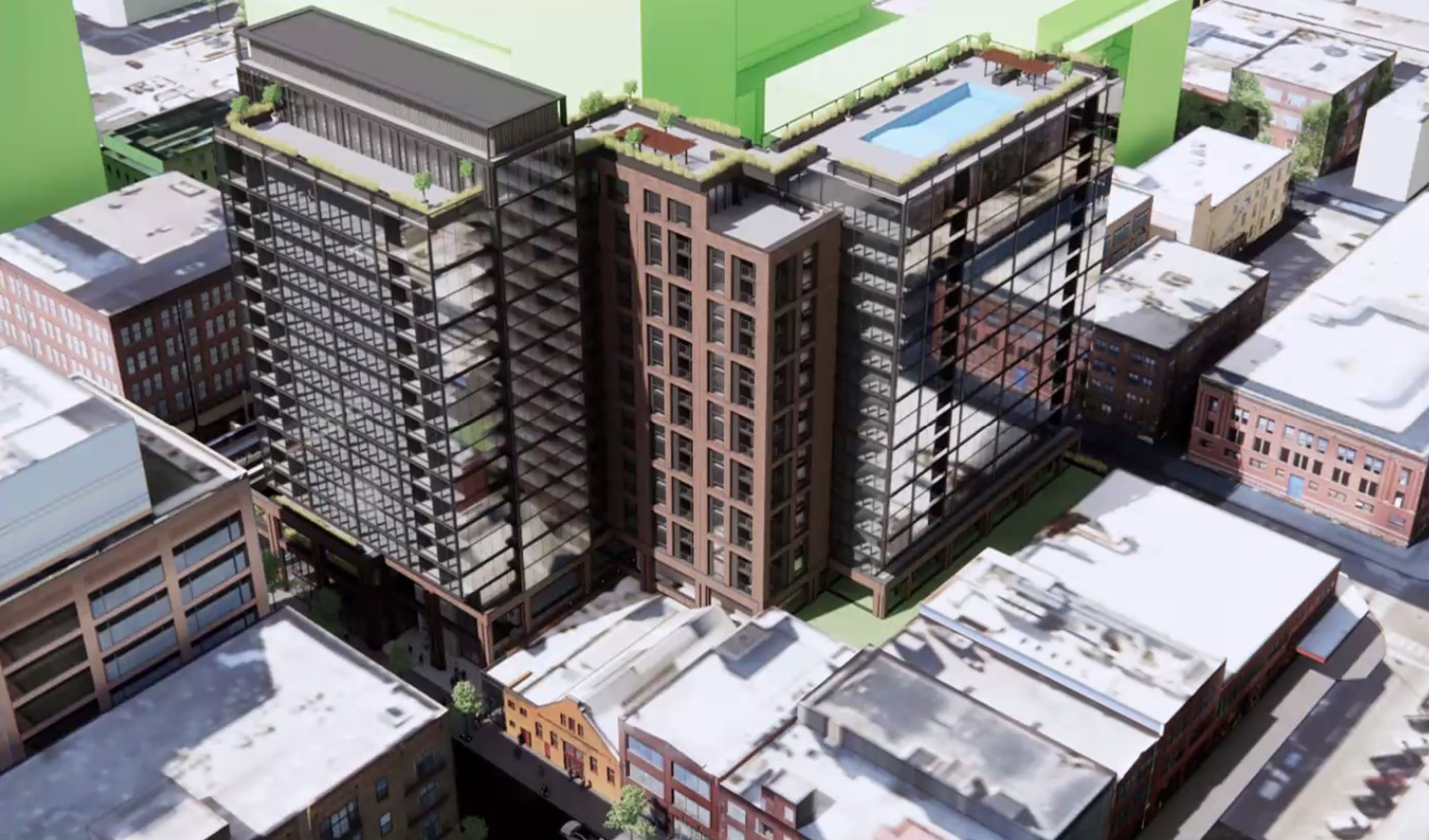
View of 210 N Aberdeen Street. Rendering by NORR
The design features a three-story podium that holds retail, residential entry, loading, parking, and amenity spaces. The podium will anchor the corner of W Lake Street and N Aberdeen Street and maintain the street wall on all frontages. The residential lobby will set back to create relief at the sidewalk and a small plaza, while holding back from the Arthur Harris structure. The residential tower portion sets back from the street and is a thinner massing, moving around the landmark district boundary and creating a stepped form horizontally.
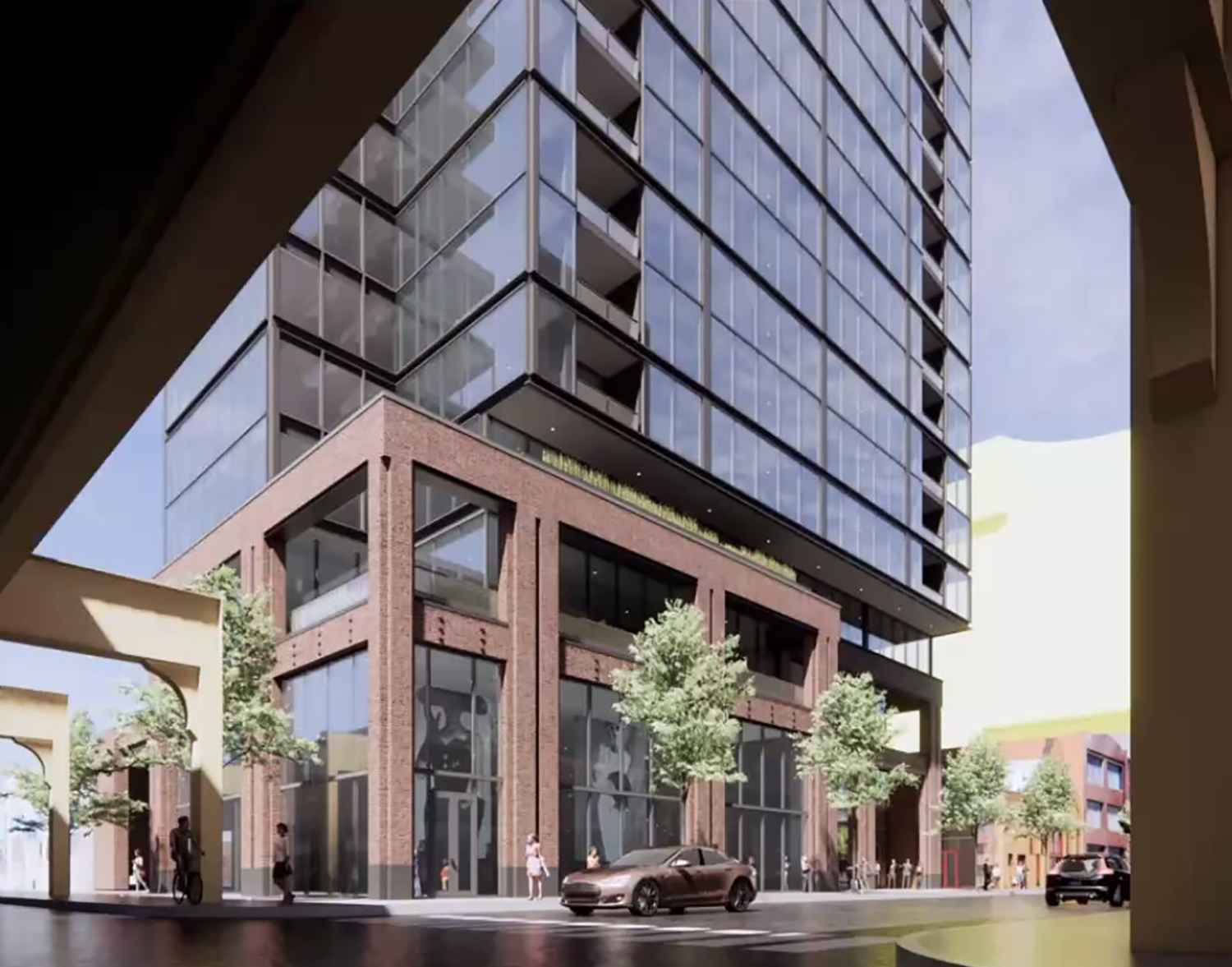
View of 210 N Aberdeen Street. Rendering by NORR

View of 210 N Aberdeen Street. Rendering by NORR
The tower massing is articulated to provide three distinct components both in height and materiality. The center mass is clad in masonry and is lower in height. The northern and southern wings are both finished in a glass and metal panel curtain wall, with the northern portion rising above the other two components. Inset balconies are included within the tower massings.
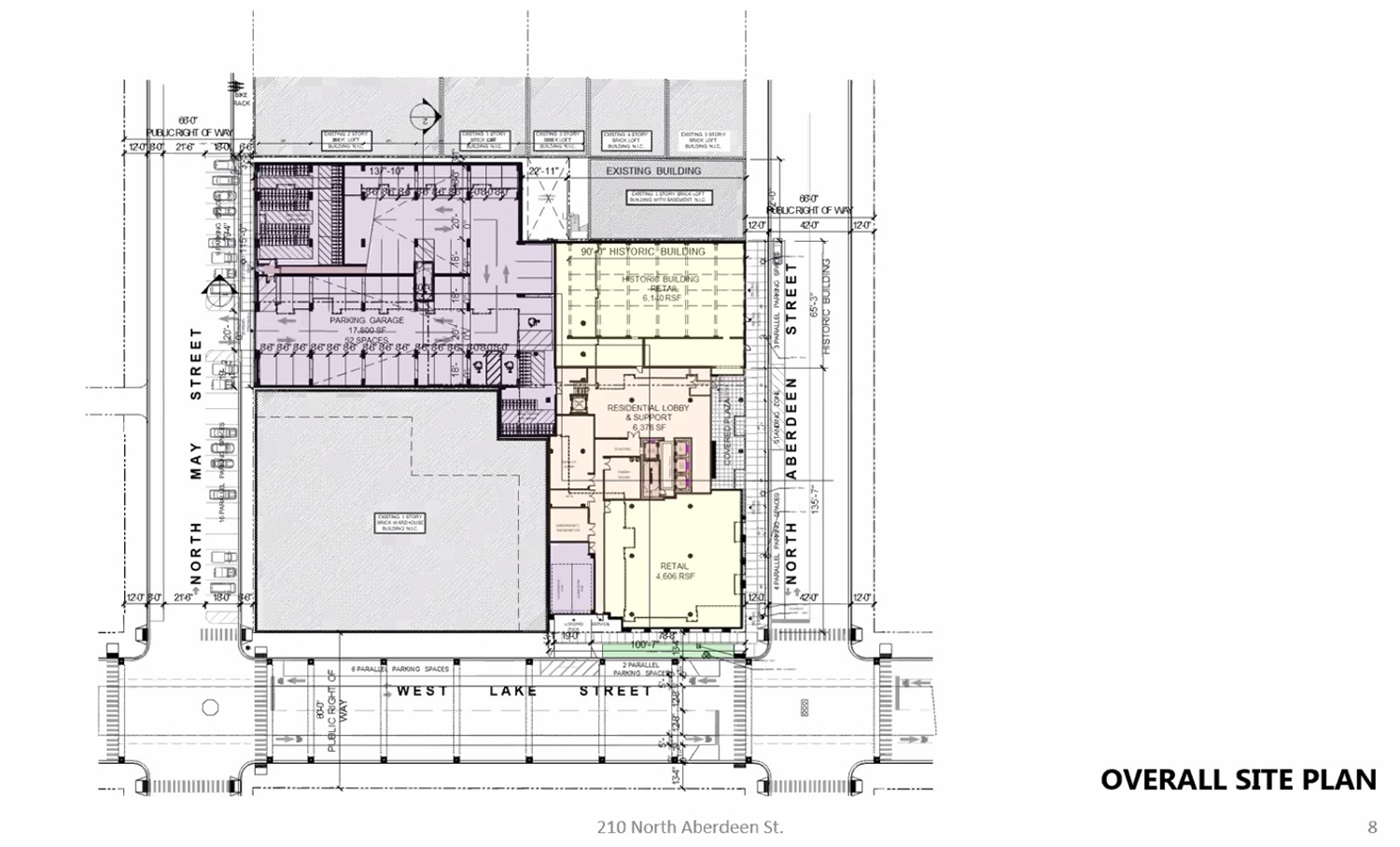
Site Plan for 210 N Aberdeen Street. Drawing by NORR
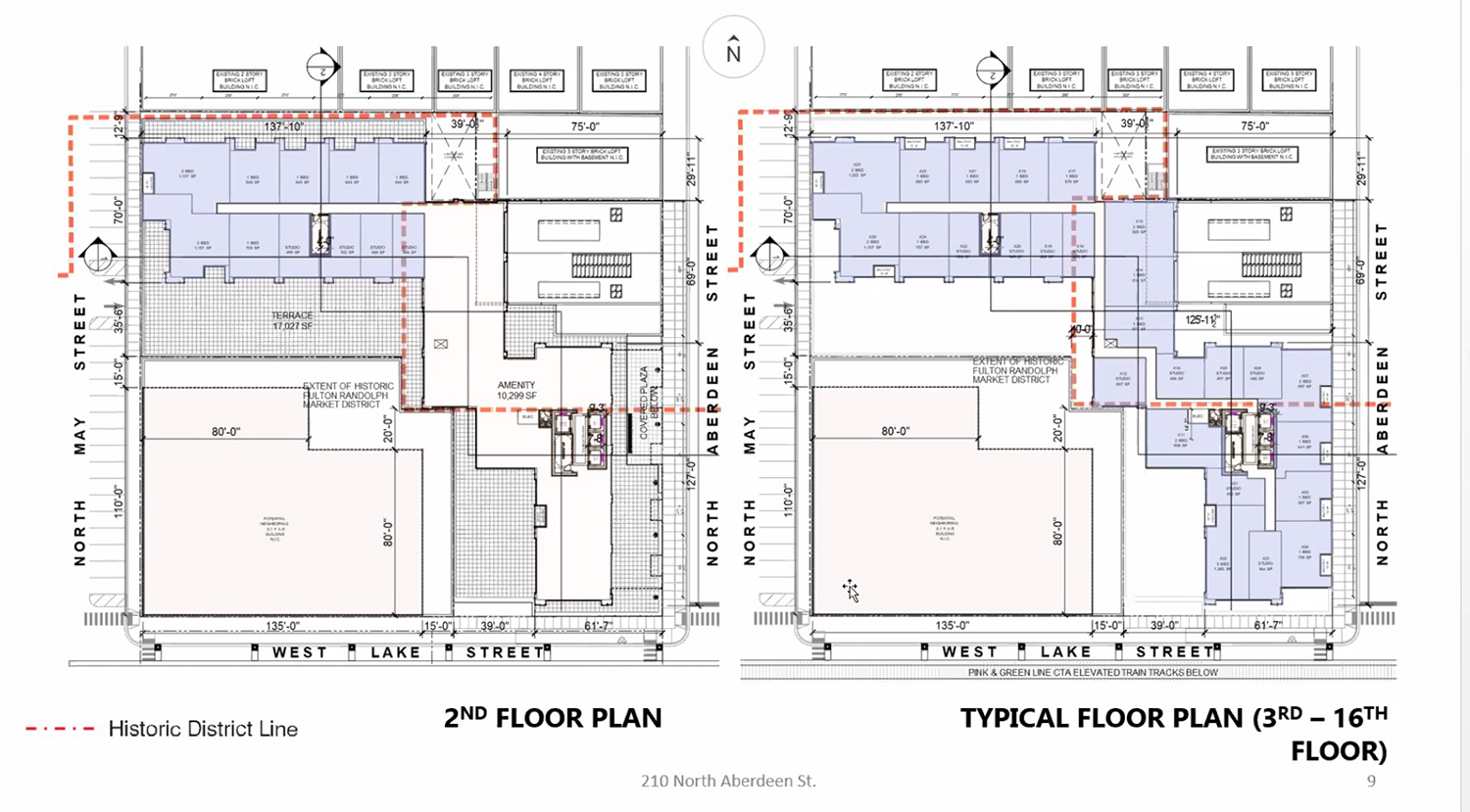
Floor Plans for 210 N Aberdeen Street. Drawing by NORR
On the ground floor, retail space will hold the corner at W Lake Street and N Aberdeen Street as well as occupy the historic Arthur Harris structure. The residential lobby will be located in between the retail spaces along N Aberdeen Street. Parking will be accessed off of N May Street with a bicycle lounge activating that street frontage. It will offer space for bicycle parking as well as repair stations that will also be publicly accessible. Loading will be from W Lake Street.

View of 210 N Aberdeen Street. Rendering by NORR
The development will require approvals from the Alderman, the Chicago Plan Commission, the Zoning Committee, and the full Chicago City Council. The developers hope to go before the Chicago Plan Commission in June and the remaining approvals will require an additional 2.5 months. Six months will be necessary to finalize documentation and drawings for the construction, with permitting lasting three months. With those milestones to achieve, the developers hope to break ground within 11 months or one year.
Subscribe to YIMBY’s daily e-mail
Follow YIMBYgram for real-time photo updates
Like YIMBY on Facebook
Follow YIMBY’s Twitter for the latest in YIMBYnews


It’s hilarious that neighbors are now complaining that the ‘guidelines’ are making all the buildings look too similar (per-Blockclub). These small-minded yuppies are quite entertaining. How did they ever think all of their ranting to developers and Burnett ad-infinitum over buildings meeting their aesthetic/material demands, providing parking, height limits, set-backs and even how buildings must be orientated was going to produce a diverse environment filled with creative structures? Of course the outcome was always going to be rinse & repeat faux-warehouses. Even the proposals that begin somewhat unique are always Fultonized in the end after the many public meetings to insist on carbon copies.